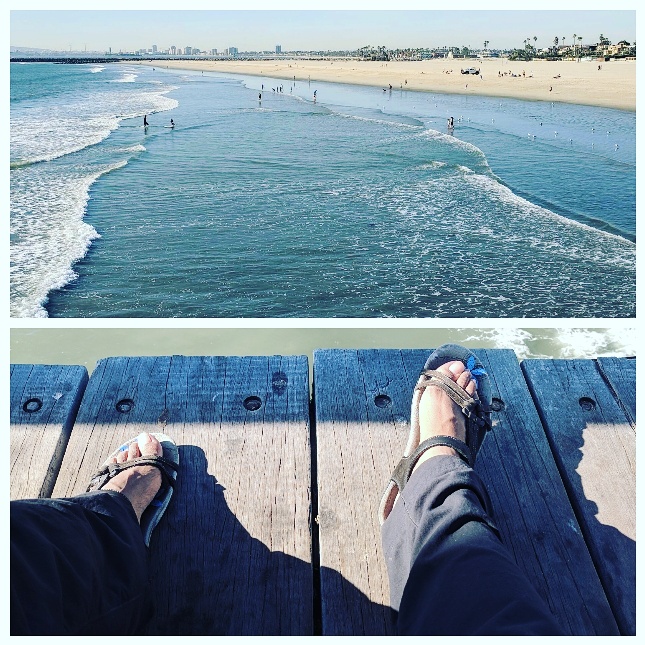What a 23.5 Mile Walk Taught Me About Diversity in the Outdoors
The Women Redefining the Outdoors event was hosted by City Kids Wilderness Project (Washington D.C.) in partnership with REI. The panel included outdoor educator Brittany Leavitt, Jessica Loya from Hispanic Access Foundation, Superintendent of Anacostia Park Tara Morrison, Founder of Melanin Base Camp Danielle Williams, Founder of Brown People Camping Ambreen Tariq and Founder of Brown Girls Climb, Bethany Lebewitz.
Yesterday I attended Women Redefining the Outdoors, an event organized by the D.C.-based City Kids Wilderness Project and sponsored by REI. The mini-conference started off with a panel made up of women of color—including the Founder of Melanin Base Camp Danielle Williams—working to diversify the outdoors, the stories that get told about the outdoors and public lands, and the tellers of the stories. During their conversation, I noticed a subtle tension between wanting to highlight and encourage more people of color engaging in activities traditionally dominated by images of 23-year old white men (backpacking, rock climbing, skydiving, etc.) and wanting to broaden the notion of what it means to “be outside” to include activities that our families and ancestors have long enjoyed.
Author Tiffany McClain at the summit of the Garden-to-Sky trail on Catalina Island during her California trip.
I felt a similar longing during my vacation last week as I walked 23.5 miles down the California coast from Long Beach to Newport Beach; broken into three-day segments. My original plan had been to visit Channel Islands and Joshua Tree National Parks, but in light of the government shut down, I decided on an adventure closer to “civilization": a journey on foot along the Pacific Coast from a predominantly striving, black and brown community, through wealthy enclaves of waterfront properties and private docks, to the predominantly white middle-class and retired “small town” feel of Seal Beach, to the exclusive community of Newport Beach. It was an adventure that not only challenged me physically—my feet still hurt a little—but also highlighted for me the different and competing interests that determine how the shoreline gets used and the different ways that people of various economic means and cultures enjoy themselves outside.
As I started off in Long Beach, I noticed a diverse community of people taking advantage of the slice of coast set aside for their recreation on a Saturday morning. A group of young South Asians played beach volleyball. Multiple Latinx cycling clubs raced down the bike path—one led by a man blasting mariachi on a small radio attached to his bike. Black women in stretch pants walked briskly to get in a day’s exercise. During my walk from Seal Beach to Huntington Beach the next day, I passed a middle-school track team of boys and girls of color using the paved trail at Bolsa Chica State Beach to run laps. While getting my feet wet at Huntington Beach, I was passed by a trio of Asian women searching expertly for rare shells and seaglass. All of the fishermen I saw along the way were black or brown-skinned men with rods in one hand and suitcases filled with a day’s catch in the other. I wondered, as I walked, why none of this was included in our understanding of what it means to be “outdoorsy?”
Getty Images
Poor and working-class people and people of color are often stereotyped as wasteful or unappreciative of the resources offered them. We make grand generalizations about where people of color live in relationship to nature. But during this journey I saw us taking full advantage of the beaches, trails, and picnic areas set aside for public use while so many of the wealthy and mostly white-owned private spaces--homes, patios, and yachts overlooking the ocean, bays, and canals--seemed comparatively empty and devoid of activity.
Resting my feet on the Seal Beach Pier after my first 7 miles. On this trip I learned that objects on the coast are farther away than they appear. It took 2 1/2 days and nearly 20 miles until I could no longer see Long Beach in the distance!
I love an adventure far from home. I love hiking up high into the mountains and getting away from the noise, pollution, and stressors of urban life. I cherish my hiking boots and my day-pack, my fleece, and my fully waterproof jacket. But if the only activities we count as being “outdoorsy” require access to a well-maintained car and a full tank of gas, expensive gear, a fully able-body, and at least half a day away from other responsibilities, we exclude a large number of people and activities from what we understand to be the outdoor world and our idea of what it means to have a relationship to nature. The overwhelming whiteness and maleness of the outdoor recreation landscape and image isn’t the natural state of things. It is shaped by economic inequality, histories of racist and sexual violence, colonization of indigenous spaces, and—perhaps most of all—a narrowness of vision.
If you don’t think people of color play outside, you haven’t been to Long Beach.




